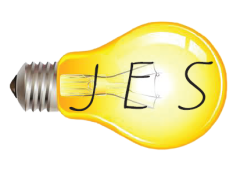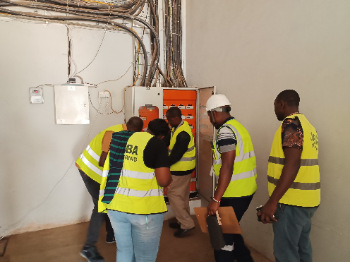Summary
Hidden electrical losses—harmonics, low power factor, sags, transients and imbalance—drive up energy bills, shorten equipment life and increase downtime in malls, campuses, hospitals and mixed-use developments. This guide explains how Jumba Engineering diagnoses issues, implements compliant fixes, and builds the ROI case.
Why power quality matters
Poor power quality (PQ) shows up as nuisance trips, hot panels, humming transformers, flicker, UPS overloads, VFD failures and rising demand/kWh charges. Business impacts include: higher utility costs, unplanned outages, reduced asset life (motors, UPS, LED drivers), and safety risk. Benchmarks we reference include IEEE 519 (harmonics), ISO 50002 (energy audits) and the IEC 61000 series (PQ measurement and EMC). We also align with EPRA/NEMA/KEBS expectations and KPLC interface requirements.
Our diagnostic approach
- Baseline energy & load study (ISO 50002-aligned): utility bills, interval data, demand/KVA profile, TOU tariff review
- PQ logging (IEC 61000 methods): 7–14 days of Class-compliant logging for harmonics (THD/ITHD), sags/swells, transients, flicker, imbalance, waveform distortion.
- Thermography & inspections: IR scans of switchboards, busducts, terminations; check conductor sizing, lug torque, ventilation.
- Selectivity & protection review: breaker curves, relay settings, discrimination, nuisance trip root-cause.
- Reporting & business case: quantified losses, risks, non-compliances, and a ranked remedial plan with CAPEX/benefit.
Common issues we find
Low power factor (PF < 0.9): excess KVA demand, penalties, cable/transformer heating.
Harmonics (VFDs, LED, IT): overheated neutrals/transformers, misreading meters, PLC/UPS malfunctions.
Voltage sags/swells & transients: motor trips, IT resets, premature failure of electronics.
Phase imbalance & poor earthing/bonding: losses, shocks, protective device mis-operation.
Protection/selectivity gaps: cascaded trips, production stoppages.
Proven fixes
Automatic PF correction: detuned capacitor banks (reactors) to avoid resonance; staged control for seasonal/load swings.
Harmonic mitigation: active filters for variable/dirty loads; line/reactor chokes; K-rated or isolation transformers where needed.
Surge & transient protection: Type 1/2/3 SPDs at service entrance, sub-boards and sensitive endpoints; coordinated earthing per IEC 60364.
Voltage sag ride-through: UPS for critical IT/medical loads; VFD settings; motor starters/soft-starts; feeder segregation.
Balance & capacity upgrades: phase re-balancing, conductor/bus sizing, transformer tap checks, ventilation and thermal relief.
Protection coordination: updated breaker/relay settings, verified discrimination, arc-flash risk reduction.
ROI: what to expect
Savings typically come from (a) lower demand/KVA charges, (b) reduced kWh losses, (c) fewer failures and maintenance call-outs, and (d) avoided downtime. Simple paybacks for PF correction and targeted filtering often land in the 12–24-month range depending on tariff and baseline distortion—your actual numbers come from site data, not assumptions. We include a transparent model in our report so Finance can validate the case.
Quick checklist (copy for your FM team)
PF ≥ 0.95 at main incomer?
THDv/THDi within IEEE 519 limits?
SPDs fitted & coordinated (T1/T2/T3)?
Breaker/relay discrimination study on record?
IR scan done in last 12 months?
Earthing resistance & bonding verified?
Segregation of “dirty” loads (VFD/IT/LED) from sensitive circuits?
Ready for a no-obligation assessment? Jumba Engineering can deploy loggers in 48–72 hours, then present a standards-based plan with CAPEX, savings and risk reduction.

